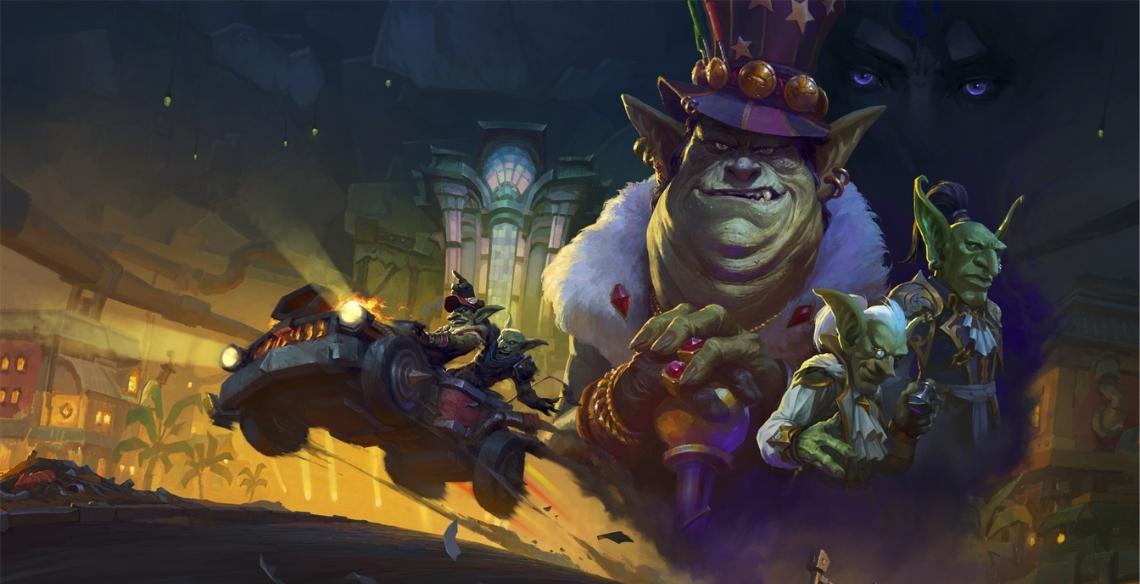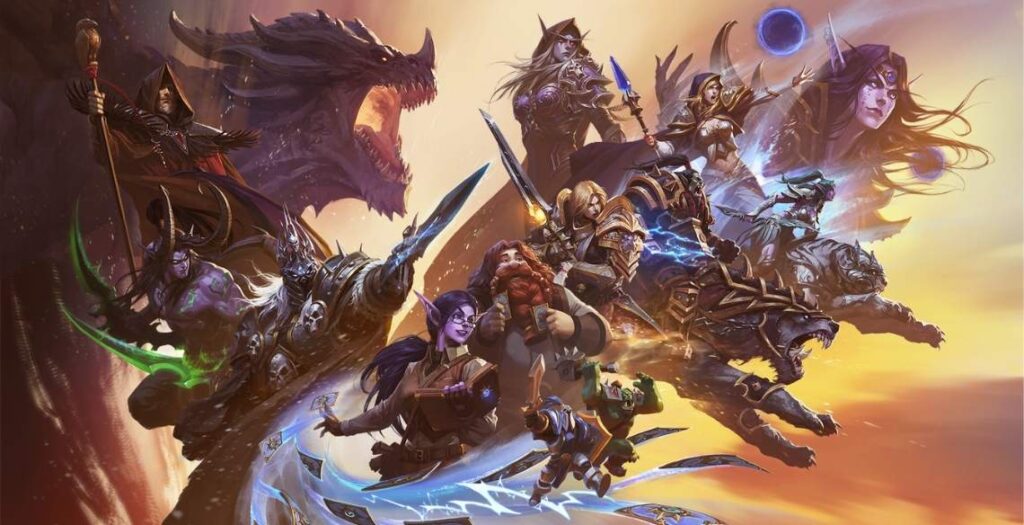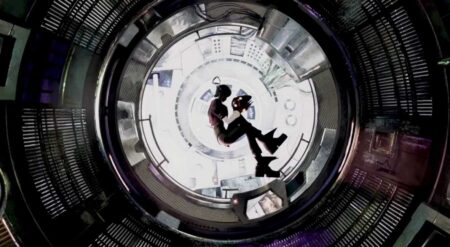Maybe not-so-coincidentally, the Warcraft 30th world tour, Blizzard’s international celebration for their Warcraft property, ended in Boston the same weekend as PAX East 2025. With some big reveals, like the next Remix being Legion (which let’s be honest, they basically told us with the 2025 roadmap reveal), and big updates coming to Legion Remix, like harder world content and Mythic Plus working with the infinite scaling aspect of Remix, as well as a new scary story experience coming soon that is the new Plunderstorm.
As part of the celebration, we were invited to sit down with Associate Game Director Paul Kubit and Associate Design Director Maria Hamilton to discuss 30 years of Warcraft. We chatted about reviving Warcraft‘s legacy for modern-day audiences with the new Lorewalking feature coming in 11.1.7, and the latest growing pains as World of Warcraft has shifted to its new era with the Worldsoul Saga.
Over 30 years is a lot of time to build such a vast world full of lore and characters. Twenty years into an MMO, there shouldn’t be an expectation of any new player hopping in to know everything right from the jump especially when that lore spans RTSs, twenty-plus novels, thousands of quests, and playing hours of old expansions, even to experience major lore beats.
The Warcraft 30th World tour is looking back at the past, but we talked with the developers about planning for the future.

In 11.1.7, Legacy of Arathor, a new questing experience is introduced, titled Lorewalking. This is a condensed questline focused on, at launch, one of three storylines: Arthas and his rise to the Lich King, the Ethereals, and Xal’atath’s history.
When bringing up the sheer amount of history, that’s a lot for the developers to remember. Even the major villain of The War Within, Xal’atath, she has massive amounts of lore locked behind the Shadow Priest experience in Legion. That’s coming back, but that’s only one of thirty-six questlines a player can choose from at that time. Maria Hamilton confirmed that the idea of Lorewalking came from the inaccessibility for players in-game.
“Lorewalking came out of us understanding that many players had not played some content that really explains a lot about, say, Xal’atath. We were thinking about how we could catch players up on these things. But also how we could pull together all the pieces that have come out in different places and different expansions,” Hamilton said.
That history leads to only a smaller group of players being heavily invested in the story than others. If only some players know where Xal’atath came from, like her current form is fully explained in a questline in Battle For Azeroth, how could the audience who started in Dragonflight and beyond get to know her better? Hamilton went on about how that knowing can assist with investing in Xal’atath’s actions. “The folks that do know that backstory are much more invested in Xal’atath than, say, the people that are like, ‘well, she did a bad thing to Dalaran and she seems mean, but also cute, so I’m not sure.”
Xal’atath’s pick to be one of the first three Lorewalking experiences makes sense. But why Arthas and the Ethereals? Hamilton gave the reason why. “Lich King/Arthas, if you’re a new player, that’s probably who you’ve heard of. And then we thought, for reasons, that ethereals might be good to know about.” Moving on to the overall Lorewalking experience, major beats for each of these three stories involve raid moments. Like Xal’atath’s deal with N’Zoth in the Crucible of Storms raid. Will Lorewalking incorporate those story beats similar to the new raid Story mode? Sadly, there was no confirmation on this. Hamilton stated, “I don’t want to say today, but I sure would like that.” Hints, maybe?
Moving on to the growing pains of the past years, particularly with the massive expansion of the Warcraft team at Blizzard after acquiring the Spellbreak developer, Proletariat, Inc. back in 2022 who quickly began working on Dragonflight and the Worldsoul Saga. The sheer amount of content for World of Warcraft has since grown in scale and size. Fun side-projects like Plunderstorm have been released with more on the way, Remix is now a thing between expansions ending and new ones launching, and Player Housing is finally coming.

“There is an active effort to post-mortem these events when [release-day bugs] things occur, and try to figure out and improve the processes across our engineering teams and our QA teams to try to improve.”
But patch days also feel much more of a mess than ever before. Especially on US servers, where US players feel like guinea pigs for EU servers with prolonged server downtime, and emergency maintenance on major patch release days appears more commonplace.
Most recently, with patch 11.1.5, the new Nightfall scenarios didn’t work as intended at the scheduled times on release day. And Warband currency transfer, like clockwork, has to be disabled for a bit of time because a new issue pops up. Paul Kubit addressed the growing issues of release day bugs. “There are a lot of systems that are all interacting, and sometimes issues will catch us off guard. It’s always our effort to make sure that we’re able to identify issues and hot fix them as soon as we can. This is always something that’s been a huge priority for the team, and I think just the complexity of the game continues to grow, and so does the complexity of the issues that we have to solve.”
Maria Hamilton added, “QA has also been instituting some post-mortems, too, which is an important step when there’s a problem and it was unexpected. We didn’t know [the Nightfall scenario not spawning bug] was coming, which caused us difficulty on a patch day.”
Even with the Nightfall release issues, Hamilton confirmed that QA did a big post-mortem about that problem to resolve these issues faster and before they launch in the future. “Is there a new test they need to add? Is there performance testing that needs to happen? Do we need to do more heavier load tests? So there is an active effort to post-mortem these events when [release-day bugs] occur, and try to figure out and improve the processes across our engineering teams and our QA teams to try to improve.”
Both echoed a similar statement—the importance of player testing on the PTR. And finally, similarly to PTR testing, balancing. Time and again, features that are tested on PTR and launched in a similar state as when they were tested end up getting massively nerfed. Like Circe’s Circlet’s healing gems getting major nerfs after players did no-healer raids, or Tank Brann, added in Undermine(d), now doing a fraction of the output he did at launch. These and more nerfs have spawned a recurring meme in the WoW community of “fun detected.”
“The goal is always to make sure that the game is fun.”

Paul Kubit explained that these nerfs in particular aren’t from reducing the fun, but to prevent players from feeling forced into playing a mandated way to be successful. “We’re always cautious to make sure that changes we make to the game aren’t too reactionary. The goal is always to make sure that the game is fun. The goal with any change like, for example, with Tank Brann, is to make sure that players don’t feel like they’re forced into a particular play style, that they’re being able to make choices like that is making sure that you have the agency to say, I prefer to play this way versus another, as opposed to sliding into a meta which is universally agreed to be the only way to play the game.”
He added that they regularly look for ways to change these balancing issues without a nerf. “We’ll always try to err on the side of, ‘is there a way that we can do this that is done without a nerf?’ And in a lot of cases, that is possible, but in some cases, it’s not. In some cases, you have to say, well, it crosses the threshold where the nerf is the easiest way to make the game most fun for the most people here.”
Hamilton added that, as stated before, the best way to ensure balancing issues are caught is by players playing on the PTR. “When we get a lot of people playing on a PTR, we get a chance to get better, balanced data, so we have a better chance to catch problems before they ship and before they become a problem on the live game. So please come play PTR.”
While I agree with the point of more players playing PTR, this ideal of not pigeonholing players into a certain playstyle may find itself at odds with some players’ mindsets. Myself included, some look for the best build for each of their classes. For Brann, when running Delves, he has specific equipment that handily produces the most output even though there are lots of fun options available that are also situationally good. And with Mythic Plus feels the most open it’s ever been to as many classes and specializations as possible, there’s still that underlying issue of the Meta being the go-to for players to feel included in harder content.
Regardless, 30 years is a long time for any game property to be around with consistent releases. With us getting close to the second chapter of The Worldsoul Saga, this new era of Warcraft is a truly exciting one, especially for players who’ve been around since the beginning. Now with more chances to convince their friends to hop into Azeroth with them, with easier ways to understand the lore. Hopefully, the aforementioned post-mortems, improved QA testing, and fixing of growing pains lead to a better experience for all players, particularly when new content comes out.
World of Warcraft: The War Within is available now on PC and Mac.



![[EXCLUSIVE] Palia Devs Dive Into Winterlights, New Tints, Lunar Paths, And More From Upcoming Patch Palia Winterlights Patch](https://butwhytho.net/wp-content/uploads/2025/12/Palia-Winterlights-But-Why-Tho-450x247.jpg)



